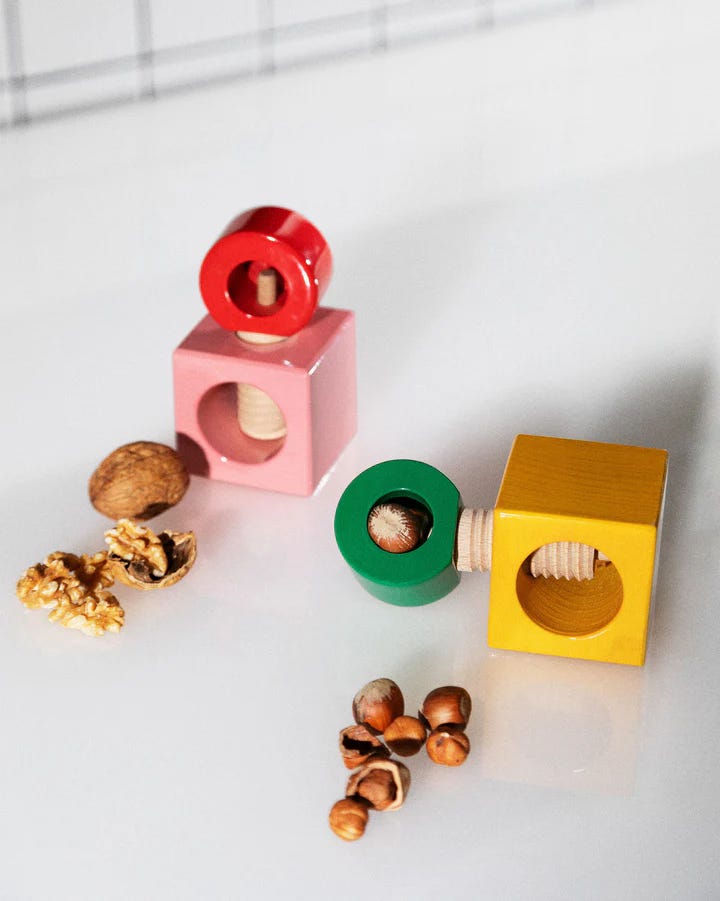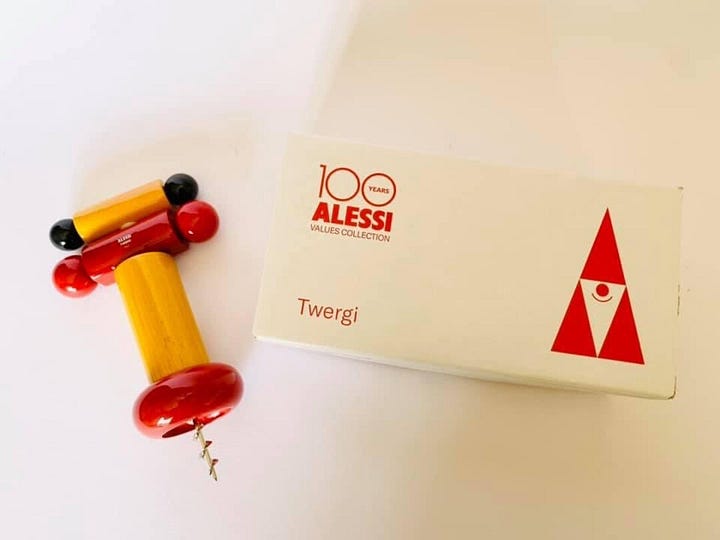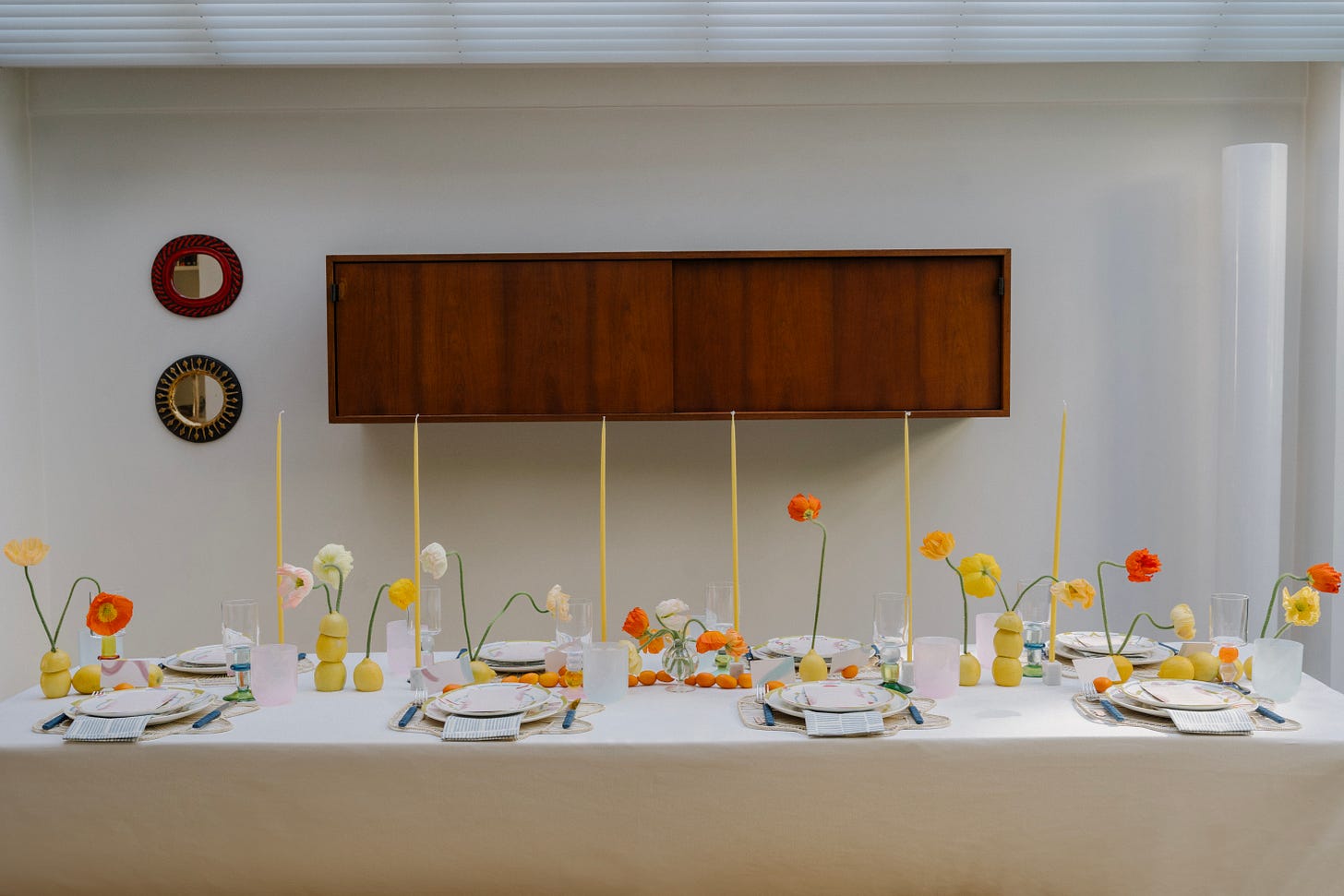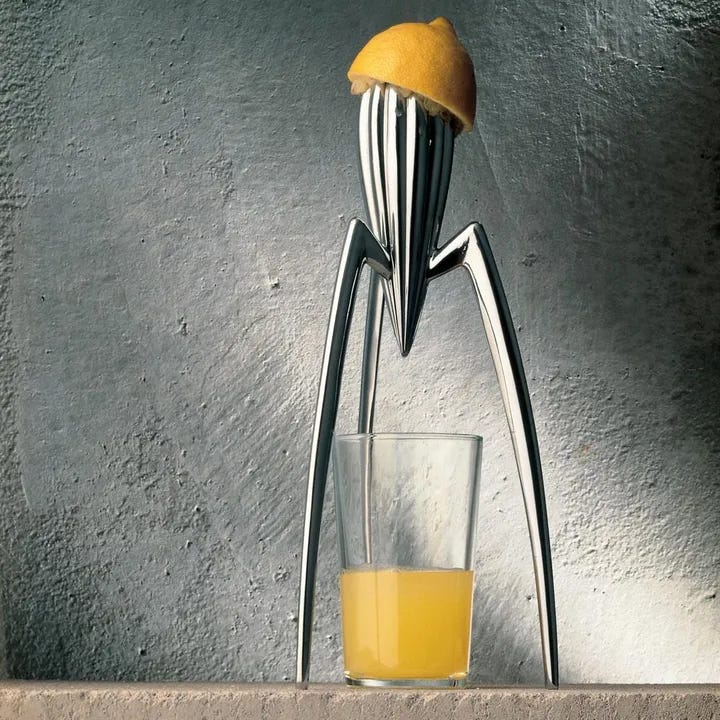Ettore Sottsass and the Objects That Misbehave
Playful designs or the joy of not taking things too seriously
I’ve been thinking about objects lately, not just how they look, but how they make us feel. So I’m starting something new here: occasional posts that drift a little, that zoom in on one idea, one designer, one piece that tells a story. A different rhythm with an ongoing obsession with the little things: less how-to, more wandering.
I’ve always liked colors and fun objects in my house or on my table. So when I was asked to style a table for Around The Sofra, choosing anything I wanted from their inventory, which is full of different styles and pieces, I went, obviously, for bold colours and playful shapes. I wanted a table that made people smile before they even sat down. You can see my full edit here.
It got me thinking about design (probably some leftover inspiration from Salone as well), and about the moment when form and function stopped being the point. When aesthetics weren’t just an add-on, but the whole story. When playfulness took the lead.
At that dinner, one of the guests mentioned Ettore Sottsass (it might have been the lemon towers I had created that sparked the parallel) and although I knew Sottsass’s aesthetics, I’ll admit, I didn’t know much more. So I decided to dig a bit deeper, especially in the pieces he made for the table. One that stood out is the salt shaker. Probably because it is such a mundane object that making it fun and playful really felt like a challenge. We’ve seen elegant salt and pepper shakers, minimal ones, sculptural ones, but none that look more like a toy than something you’d actually use.
And that, of course, was the whole point of the design movement Sottsass founded: turning the ordinary into something absurd, fun and even a bit sexy. They gave objects a personality, as if they were creating characters. And this is where the whole idea of a table becoming more than a place to eat but a stage.
The Alessi Movement
Sottsass wasn’t the only one turning everyday objects into something unexpected. In the late '80s and '90s, Alessi became a kind of playground for bold thinkers, inviting architects, industrial designers, and artists to reimagine the domestic landscape through what they called design authorship.
It wasn’t just about how well a citrus squeezer worked, but how it made you feel when you looked at it, held it, used it.
There was Philippe Starck, who gave us the Juicy Salif, a lemon squeezer that looks more like an alien spaceship than a kitchen tool. Michael Graves, with his now-iconic whistling bird kettle and Alessandro Mendini, whose corkscrew Anna G. had a face, a waist, and a sense of humour, like a cartoon character with a job to do.
Each object had presence. Personality. And there are still today as relevant as they were years ago.
Alessi made the case that homeware could be emotional and a little silly. Instead of producing anonymous tools, these star designers turned functional objects into creative statements.
What It Made Me Rethink
I guess this (small) dive into design made me realise that sometimes, the most interesting tables aren’t the most elegant, they’re the ones that surprise you. The ones with a sense of humour. A little chaos. A lemon tower here, a super skinny candle there, a salt shaker that looks like it belongs in a child’s toy box. The real challenge though, is how to tie together to make sure it is indeed, elegant.
When I host at home for my friends, I’ve never really been into matching tableware or perfect flowers. It’s about my mood on the day, about the guests that are coming and what I want to create as a vibe.
Sottsass and the Memphis Group didn’t just make objects, they gave them attitude. And ever since, I’ve started to think a bit differently about what gets a place on my table. Not just the beautiful things, but the ones that start something. A laugh. A conversation. We’ll see where that takes me :)
A side note on The Memphis Design Group for some context. Founded by Ettore Sottsass (born in Austria, grew up in Italy) in 1980 in Milan. At a time when minimalism, modernism, and functionalism ruled, The Memphis Group came in with bold colours, clashing patterns and playful forms, in a way defying what was, at the time, accepted as good taste. Their pieces weren’t quiet or practical, they were conversation starters, mood lifters and somehow a small act of rebellion against the beige world that was increasingly gaining momentum in the design world.
Spoiler… It has nothing to do with Tennessee… When I heard about The Memphis Group, I automatically thought it was born in the US but when I found out it was born in Milan I had to understand the origin of the name. Turns out it was a random choice as so many great things are: at the group’s first meeting in Milan in 1980, Bob Dylan’s song ‘Stuck Inside of Mobile with the Memphis Blues Again’ was playing on repeat. And as they say the rest is history. Do listen to the song :)
When Salt Shakers Became Statements
Let’s be honest, a salt shaker isn’t exactly the sexiest object. But that’s the point. It’s mundane, overlooked, almost invisible. And yet, Sottsass managed to make it fun, joyful, and weirdly cute. An object with a bit of a wink.
There’s something quietly powerful about having pieces like that around the house, everyday things that lift your mood. So if a salt shaker can make us smile, what else have we been underestimating?


Don’t worry I am not expecting everyone to suddenly start hosting with lemon towers and a bird-whistling kettle. Just let yourself go the next time you’re setting the table, or on the lookout for some tableware. Leave some space for something unexpected. Something that doesn’t behave.
You might be pleasantly surprised.
If you like this please drop a ❤️ , share it with a friend, leave a comment, or subscribe! For more JOSI, you can follow us on IG.






